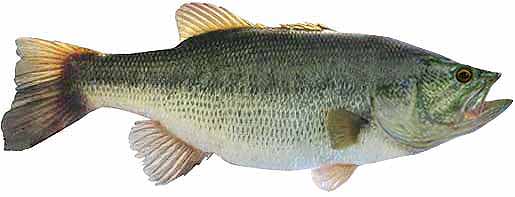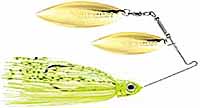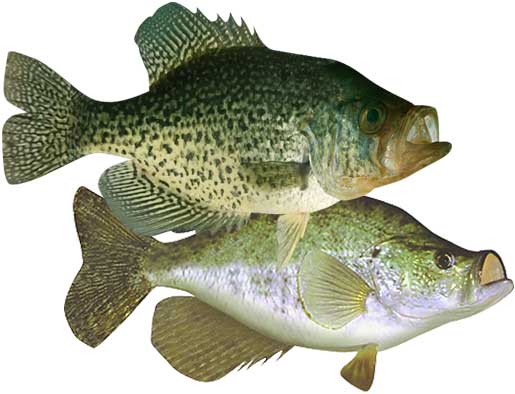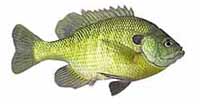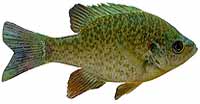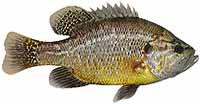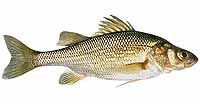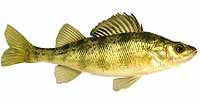Fishing Report For Lake Murray, SC
By Rick Seaman
Last updated on .

Fishing Reports
Popular Fish Species Lake Murray, SC
Largemouth Bass
Current Report: Good
Reported by many to be one of the best lakes in the state, Lake Murray continues to deliver both quality, and quantity, bass fishing opportunities. The lake has abundant, shallow cover which helps keep bass shallow for much of the year.
FALL. Now that Fall has arrived, bass here have moved shallow, following schools of baitfish into coves and shallow bays around 4 to 15 feet of water. Currently jerkbaits, crankbaits, and slow-rolled spinnerbaits are catching most of the bass. Later in Fall, as deeper water cools, bait and bass move out to ledges, channel edges, points and humps where flutter spoons, jigs and drop shots are often good choices in 15 to 20 feet of water.
WINTER. Winter will isolate largemouth around slightly deeper structure, flats, points and creek channels. They can be found from 12 to 30 feet deep, sometimes even deeper. Here they hold, feeding less frequently, awaiting warmer water to return in Spring. Slow presentations are key to getting bites. On warmer days, especially during late afternoons, bass may move into 8 to 15 feet of water to feed.
SPRING. Once water temperatures rise into the low 60's, largemouth will move from deep wintering holes, to shallower transition zones nearby spawning areas. Vibrating jigs, jerkbaits and spinnerbaits typically get bites just away from the shoreline. At this time they are feeding aggressively in about 10 to 12 feet of water, and preparing for the spawn. Once water warms into the mid to high 60's, they will move into 2 to 4 feet of water, and create nests, then lay their eggs. Immediately afterwards, females move to deeper water and males remain to guard the eggs, and then the fry. After a couple weeks, the males also move to slightly deeper water. In open water, around rip rap, shallow- and medium-depth crankbaits are catching lots of bass. Vibrating are jigs working well, drawing bass out of cover, where they are looking to ambush prey.
SUMMER. Water temperatures will warm considerably in Summer. Bass will feed shallow, early and late in the day, where they will be caught in 8 to 20 feet of water, on square-bill crankbaits and spinnerbaits. Wacky-rigged stick worms always catch finicky bass when the bite is slow. Largemouth bass here feed on shad, herring, small sunfish and crawfish. During the hotter parts of the day, they are being caught on points, channel edges, and ledges 15 to 35 feet deep.
Striped Bass
Current Report: Fair To Good
Local guides report good fishing for stripers again this year on Lake Murray. The lake has a large population of stripers, and some are trophy-class fish. A significant number of stripers remain in the main body of the lake, pretty much year round. Others migrate in and out of major creeks like the Big Saluda River, the Little Saluda River, and behind Misty Island.
FALL. In Fall, stripers return to shallower water. Early in the day stripers chase bait to the surface and feed aggressively, making this an excellent time for topwater action. They follow schools of bait, which are hanging out in 20 to 40 feet of water. Look for shallow water nearby deeper river channels, and fish them thoroughly. Most any lure that resembles shad will catch striped bass at this time of year. Late Fall will find most of the stripers in 30 to 40 feet of water.
WINTER. In Winter, stripers again hang out in deeper water and feed close to the bottom, often as deep as 60 feet. Warm, sunny afternoons occasionally draw stripers shallower, to around 25 or 30 feet deep as they feed on roaming schools of threadfin shad and gizzard shad. The main lake basin, along deep channels is holding schools of stripers, especially in the section of lake around the dam. Locate schools of bait, then look for stripers close by. Fish finders, and forward facing sonar, are a big help in locating these roaming schools. Nice stripers are caught while drift fishing with live bait or cut bait. Spoons, blade baits, and heavy hair jigs are also effective this time of year. Late in the cold season, anglers catch stripers along creek and river-channel edges, around 40-60 feet deep. Due to the stripers slower metabolism this time of year, anglers are triggering more strikes by working baits more slowly.
SPRING. Water temperatures are return to the mid 60's, and that's ideal for the stripers to spawn. In Spring, work the upper end of the lake, and the backs of coves, where there is inflowing water. If they spawn, this is where they will lay eggs in the moving water. They also move into transition zones on the main lake, in 25 to 40 feet of water, feeding on baitfish which are moving toward the shallows. Expect to locate them on mid-depth ledges, flats or points. The lake record is 59 pounds, and many anglers believe there may be bigger ones swimming here.
SUMMER. Summer months are the ideal time to chase striped bass here. In early Summer, stripers hang out in deeper water during the heat of the day, 30 to 50 feet deep. Much of the time they are holding over deeper, open water. Morning often draws the stripers shallower, so look for them around the 10 to 20-foot range as they feed on roaming schools of gizzard shad, threadfin shad and blueback herring. Being successful at fishing for stripers in Summer is a matter of locating schools of bait, and the wolf packs of stripers are likely to be nearby. Later in Fall, expect to locate schools 35 to 60 feet deep. Fish finders, and sonar electronics, are a big help in locating these roaming schools. Nice stripers are being caught while trolling or drift fishing. Spoons, blade baits, crankbaits, live bait and cut bait are all effective here.
Black & White Crappie
Current Report: Fair To Good
While you can catch crappie all around the lake, the Big Saluda River bays and the Little Saluda River bays tend to hold big concentrations, due to excellent cover and fertile water. Locals report that early and late in the day can be the best time to catch some bigger slabs.
FALL. Baitfish, which are moving into shallow flats, coves and bays, are drawing crappie into these areas. They are feeding heavily in preparation for the cold Winter, in 12 to 18 feet of water. Minnows, hair jigs, and crappie jigs, are good options during this feeding marathon. Late fall starts the migration deeper, toward winter holding areas, for both crappie and baitfish. Small flutter spoons, fished in 15 to 20 feet of water, are a good option during this transition. Good results are coming around points, creek channels, and brush piles.
WINTER. Once the shallows start cooling rapidly, crappie will migrate to deeper holding areas, mostly off shore. At this time they are typically caught using a very slow presentation, in 20 to 30 feet of water. Most are caught around deep brush piles, creek channel bends, submerged timber, and main-lake structure. If they are suspending in open water, they often relate to some cover, or structure change, directly below them. During warming trends, especially warm afternoons, they are drawn into 12 to 18 feet of water to feed.
SPRING. In early Spring, crappie begin staging in 6 to 15 feet of water, just outside spawning bays and shallow flats. Spring is prime time to be on the water, as both black crappie and white crappie have moved shallow to spawn. At that time, they are typically caught in 2 to 8 feet of water. Vegetation, docks, brush and wood are where most anglers catch crappie using small crappie jigs or live minnows. After the spawn, crappie typically move outside the spawning area and hold on cover close by, in 10 to 15 feet of water. Once they move deep, anglers report success using fish finders and forward facing sonar to locate schools of crappie, which tend to stack vertically around cover. Light tackle, with 4 lb to 8 lb line, is a popular choice.
SUMMER. Water temperatures get quite warm, and crappie fishing is usually pretty good. They feed in 10 to 20 feet of water early and late in the day, until the hot Summer sun causes them to retreat to depths of 15 to 25 feet. Also, a few have embedded in the shade of slightly shallower vegetation. This is a good time to focus around brush piles, standing timber, deep lay downs, bridge pilings and deeper docks. Anglers are also locating schools of crappie hanging over deep structure and around creek channel edges, using fish-finder electronics.
Fishing Video
Fish species to fish for...
Guide to fishing for largemouth bass, channel catfish, flathead catfish, black crappie, white crappie, bluegill, pumpkinseed sunfish, redbreast sunfish, redear sunfish, warmouth, white perch, yellow perch, striped bass and chain pickerel at Lake Murray in South Carolina.
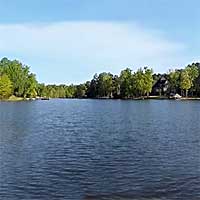 Lake Murray is a 50,000-reservoir with 620 miles of shoreline, which is home to multiple fish species. This fertile fishery is conveniently located on the outskirts of Columbia, South Carolina. Fish species include bass, crappie, stripers, catfish, perch, sunfish and chain pickerel.
Lake Murray is a 50,000-reservoir with 620 miles of shoreline, which is home to multiple fish species. This fertile fishery is conveniently located on the outskirts of Columbia, South Carolina. Fish species include bass, crappie, stripers, catfish, perch, sunfish and chain pickerel.
Primary fish species to catch
Click images for fishing tips and details about each species.
Today's Weather & Forecast
Fishing Boat Rentals
Click here for fishing boat rentals.
Public Boat Launch Ramps & Landings
Click here for boat ramps.
Marinas
Click here for marinas.
Fishing License
Click here for a South Carolina Fishing License.
Map - Fishing & Access
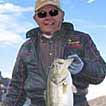 Rick Seaman is a fishing enthusiast with over five decades of fishing experience, a retired tournament fisherman, author of numerous published articles on fishing, and co-author of the book "Bass Fishing - It's not WHAT you throw, It's WHERE you throw it".
Rick Seaman is a fishing enthusiast with over five decades of fishing experience, a retired tournament fisherman, author of numerous published articles on fishing, and co-author of the book "Bass Fishing - It's not WHAT you throw, It's WHERE you throw it".
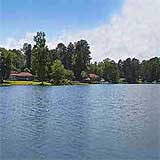 Contact Information
Contact Information
Dreher Island State Park
19 Park Marina Dr
Prosperity, SC 29127
803 364-4152
Fishing lakes in each state
102125
Lake Murray, South Carolina Report
SOUTH CAROLINA


Information about fishing lakes in SC
Go fishing at Lake Murray to catch bass, crappie, stripers, perch, sunfish and chain pickerel in central South Carolina.


